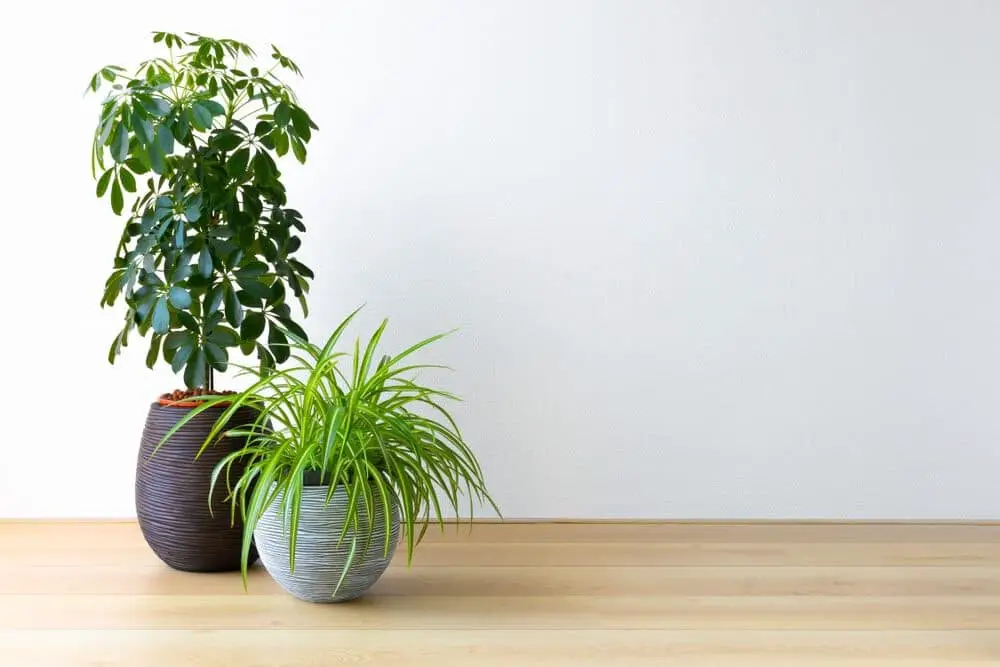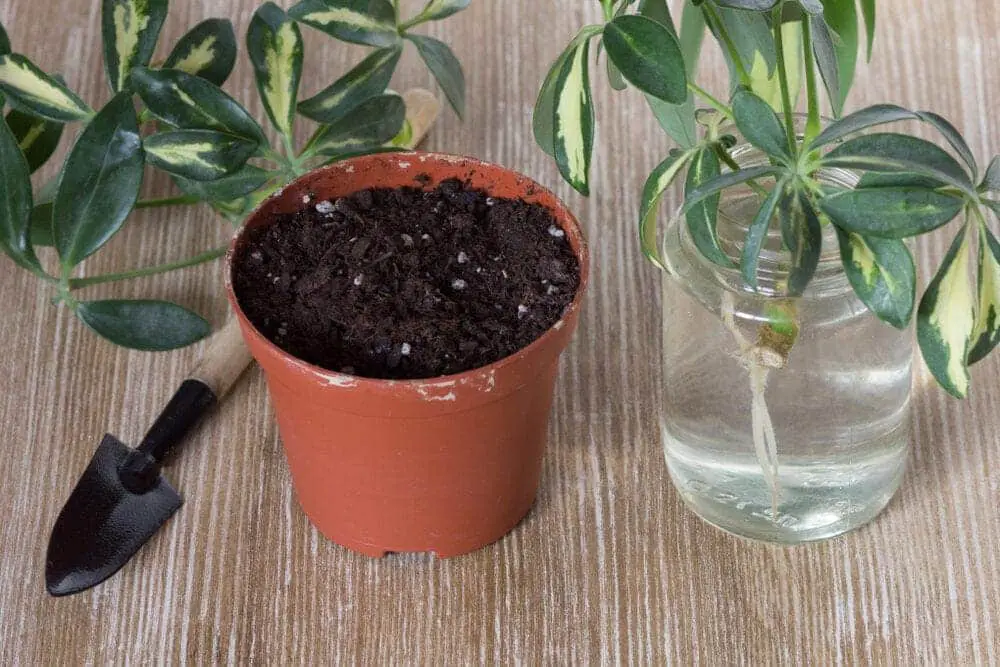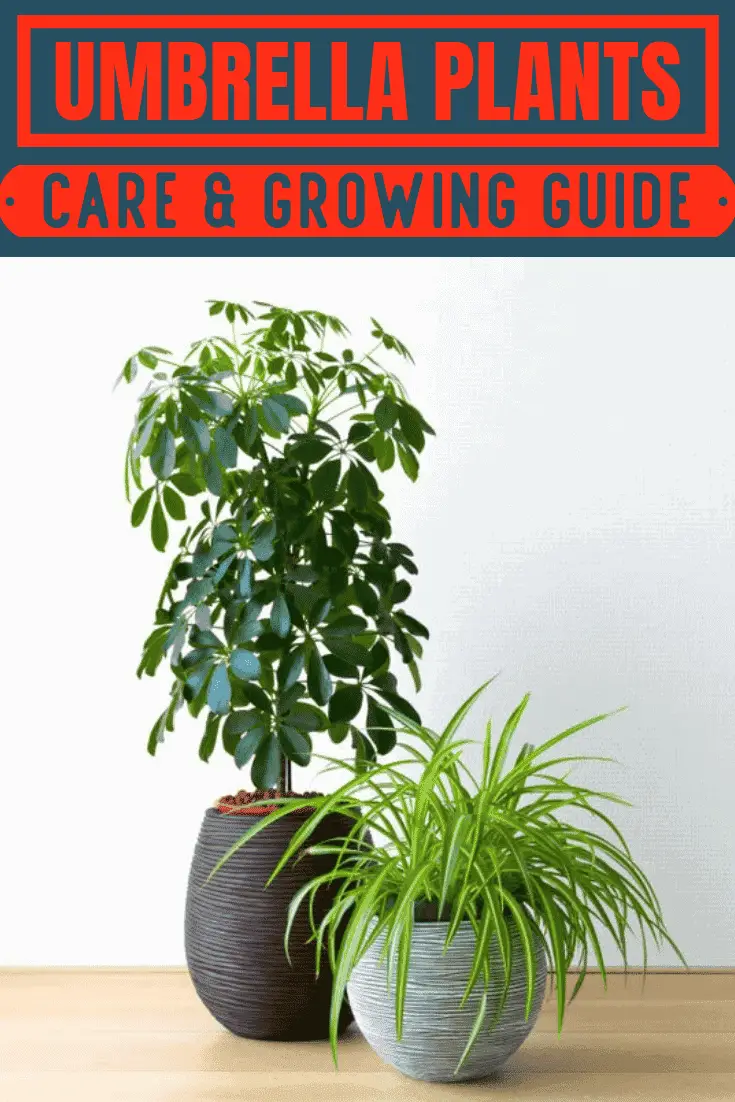There are two types of umbrella plants, the Schefflera and the Heptapleurum.
Despite their differences, each plant is an easy, low maintenance houseplant that improves any room they’re in. These plants can grow to amazing heights if they’re outdoors and can touch the ceiling if they’re indoors too. The Schefflera plant comes all the way from Taiwan.
Umbrella Plants Care & Growing Guide
1. Light Requirement
Pick an area in your home without direct sunlight but has a lot of indirect sunlight and keep your umbrella plant there. Don’t expose this plant to direct sunlight, especially during the hottest part of the day. It can be exposed to morning light, though. But, the less indirect light it receives, the slower it will grow.
2. Water
This type of plant favors moist soil, so make sure to water it often. It will take time to understand the right amount of water it needs. Over-watering this plant will turn the leaves yellow, but under-watering causes severe drooping. Don’t allow the soil near the roots to dry, but the topsoil needs to dry out before you can water it again. If you would like to fertilize it, use liquid fertilizer, and add it to the water. Do not water this plant overhead.

3. Climate and temperature
Umbrella plants do not like the cold at all. If exposed to air that’s too cold, the leaves will go into shock and fall off the plant. Make sure the temperature around the umbrella plant is around 65 to 75 degrees. Along with the stable temperatures, the air has to be slightly dry. But if the air is too dry, you may have to mist the plant or set it next to a humidifier for a period.
4. Soil
Make sure the soil drains well and quickly. Always keep the soil moist. It can grow in soils from 6.0 to 7.5. The best type of additive to include in the potting soil is peat moss, which improves drainage.
5. How to repot the Umbrella plant?
Trimming the umbrella plant is an essential part of maintaining its growth. When its roots are coming out of the drainage holes, it’s time to replant it into a bigger pot. If your plant has reached maturity, then it needs to be repotted into a permanent container. After maturity is reached, it still needs to be repotted every two to three years to refresh the soil and to check on its roots. If you add compost every time you repot an umbrella plant, you don’t need to use fertilizer for at least two months after.
6. Speed of Growth
As we stated before, the umbrella plant grows very fast. Growing does stops in the winter, and also if it’s not exposed to enough light. Under average conditions, this plant can grow a whopping 3 feet a year!
7. Height and Width of the Umbrella plant
The umbrella plant is very versatile, it can be tall and reach 6 feet, or it can be small and only grow to 3 feet, even if it’s in a pot indoors. If this plant is left by itself outside, it can grow up to 10 to 20 feet.

8. Trimming
Umbrella plants are known to be fast growers, so you have to trim it frequently. To keep the umbrella plant the size you want it, you must prune away leaves and stems that are too large. To prevent it from growing taller, pinch off any new top growth.
How do I propagate the Umbrella plant?
If you’re a beginning gardener, you’re in luck because propagating these plants will be easy for you. Cut a two to four-inch piece off of the stems. Then each leaf must be cut in half, so they require less energy to maintain. Dip it into root hormone and repot it about two inches into the soil of its new small pot.
Is the Umbrella plant poisonous?
Yes, the umbrella plant is poisonous to both humans and animals. The poison lies in the sap of the plant, which contains calcium oxalate. If the sap gets on skin or fur, it can cause irritation and redness. But when the leaves or sap are eaten, it will cause dizziness, lack of coordination, and numbness in the mouth and vomiting. You cannot have animals or children near this plant.
Can the Umbrella plant grow in water?
No, the umbrella plant cannot grow in water, but you can root a new cutting in water before transferring it to regular soil.
Does this plant have flowers, and can I get it to flower?
Yes, the umbrella plant occasionally produces red flowers that look like tentacles coming out from behind the leaves or stems. But you may not witness this, because they do not bloom when indoors.
Common Umbrella plant Diseases
Spider Mites are a common indoor plant pest. You’ll know you have a spider mite problem if you see white and yellow dots around the leaves and stem of your plant. There’ll also be thin spider webs around the leaves. To get rid of spider mites, you can rinse the foliage out and then apply neem oil to the entire plant, which is an irritant to many bugs.
Leaf Blight is a bacterium that infects the foliage of umbrella trees. You will see black spots form on the leaves. Then, they will get larger and darker and black. Eventually, the leaves of the umbrella plants will weaken and die.
Powdery mildew is a prevalent fungus that you will see on most indoor and outdoor plants. It looks like white residue and is kind of waxy to the touch. If it doesn’t grow, then it is just an aesthetic problem, but if it grows all over the plant, you can weaken the leaves and prevent photosynthesis. It’s easy to get rid of it. Spray neem oil or a baking soda and water mix onto the affected plants every few days until it is gone.
More like this:Philodendron Xanadu Care & Growing Guide
Conclusion
- This plant is also known as the octopus tree.
- This plant has flowers, but they do not bloom if the plant grows indoors.
- This plant can grow up to 20ft tall.
- The sap of the umbrella tree is poisonous.
- Keep the soil moist but never soak it.
- Never expose it to intense direct light, only indirect light.
- It grows as much as three feet a year.

Victoria is the owner and main author of hobby plants. She loves spending her free time in her garden planting and taking care of her plants. Victoria hopes you enjoy the content here!